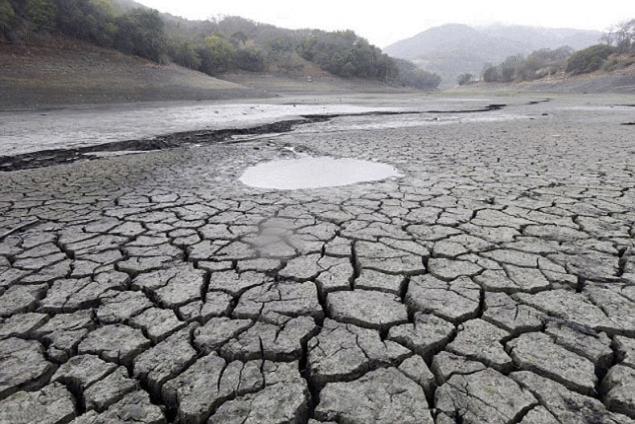7 evidence that the world has become worse over the last century
 Bashny.Net
Bashny.Net

60%
decreased the amount of fresh water for each person in the world over the last 40 years
The human right to clean water, the UN recorded, but never has the problem of access was not as sharp. Not the last role was played by the sharp increase in the human population. In the end, at the moment, constant access to clean water now do not have 1.2 billion people, only 400 million less than the entire population of Earth in the early twentieth century. In today's world for access to fresh water, unfold real armed conflicts. One of the last such wars became protracted conflict between Kazakhstan, Uzbekistan, Tajikistan, Turkmenistan and Kyrgyzstan, which lasted from 1992 to 2002. Now the problem with drinking water in Yemen may cause a new military conflict. 1.4 billion
people at the age of 20 years are overweight
Technology has made food more affordable and physical activity is rare and optional. Along with changing the diet this led to the appearance on Earth of the whole obesity epidemic. Now, every third adult person on the planet has overweight, and one in ten suffers from obesity. The result from obesity and related diseases each year are killed almost 3.5 million people. The problem concerns not only adults: in 2012, more than 40 million children under the age of 5 years were overweight. 36 million
people have died from AIDS since 1981
AIDS is called the plague of the XXI century. HIV was not known until the early 1980s and is now annually kills about 1.6 million people. To defeat AIDS is not yet possible, although we have made progress in his therapy. At the moment there are around 35 million people infected with HIV, and then every 200th person on the planet suffering from a virtually incurable disease. 230000
people became victims of crash of the Chinese Banqiao dam
It happened in 1975. Powerful Typhoon Nina broke through several dams in Henan province, tens of thousands of people were instantly washed away by the powerful wave, and the rest died as a result struck the disaster area of starvation and disease. In General, accidents on manufacture and various industrial sites has happened since the beginning of time, but truly catastrophic consequences of technological disasters is a sign of a new time. The industrial revolution has done its job, and the accident at a modern plant can cost hundreds of lives. So, the victims of sudden collapse last year of the factory in Bangladesh were more than 1000 people and the accident at a chemical plant in the Indian city of Bhopal — about 18 thousand. However, the threat to the planet remains a disaster in the energy sector: suffice it to recall the tragedy in Chernobyl, or a nuclear power plant in Fukushima. 5000
tons of space debris now revolve around the Earth
Space junk problem, which could appear only in the XX century. People are very drawn to the space, but, once there, managed pretty quickly to litter: currently in orbit is around 20 thousand various objects of human origin that is larger than a baseball. Space agencies are now coming up with various methods of cleaning the space from the technological waste, however, which one is more effective is still unclear. However, some historians believe that the space junk in Earth orbit will be of interest to archaeologists of the future. 47 %
jobs will disappear in the next two decades
Blame will, of course, robots. Theoretically we already went through something similar during the industrial revolution, and then we were able to create enough new jobs to solve the unemployment problem. But the consequences of a new wave of automation can be serious — both for the economy and the social sphere. This time on the side of progress may be a significant proportion of the middle class. 99.6% of
the people of Africa do not have access to the Internet
The Internet is one of the main benefits, which gave us the twentieth century. But when a large part of the world's population does not have this good of no access, we are creating another very powerful factor in social and economic inequality — digital.
Source: apparat.cc
Tags
See also
13 evidence that changes everything Beard
13 evidence that changes everything beard
20 evidence that children need cats
13 visual evidence that changes everything beard
12 evidence that we are all a little capybaras
12 evidence that children's logic wins adult
15 evidence that dogs make our lives better
7 signs that other planets might harbor life
7 compelling evidence that other planets might harbor life
22 evidence that we are living in the future. And earlier this seemed fantastic!
















